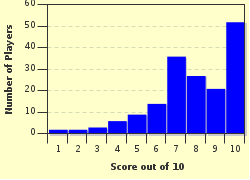Quiz Answer Key and Fun Facts
1. Would a person who used real objects (which are not being used as symbols) to communicate be considered to be in the Intentional level of the Communication Continuum?
2. Is a person in the Intentional level of the Communication Continuum able to make choices?
3. What age does a child start to communicate intentionally? (note I'm asking about a typically developing child here)
4. Which one of these people is in the Intentional Communication level?
5. What is the fewest number of stimuli individuals need to divide their attention between, to be able to communicate in the Intentional Communication stage?
6. Will people in the Intentional Communication stage be persistent if their first efforts aren't noticed?
7. Can you reject things when in the Intentional Communication stage of communication?
8. Can intentional communication be used to request things?
9. Is it possible to use "symbols" while working with an individual who is in the Intentional Communication stage to assist with the transition to the Intentional-Symbolic Communication Stage?
10. Are you able to communicate intentionally with just eye gazing?
Source: Author
littlesuzie
This quiz was reviewed by FunTrivia editor
agony before going online.
Any errors found in FunTrivia content are routinely corrected through our feedback system.


